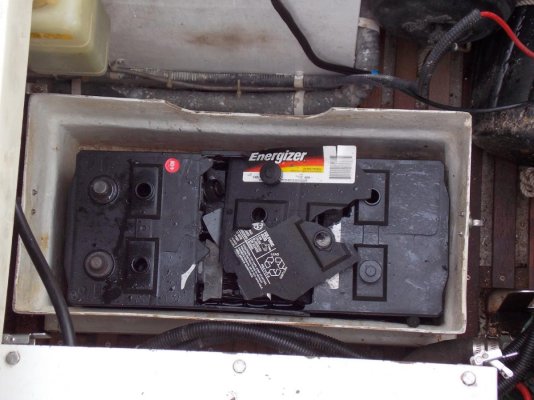Alaskan Sea-Duction
Guru
- Joined
- Jul 6, 2012
- Messages
- 8,056
- Location
- USA
- Vessel Name
- Alaskan Sea-Duction
- Vessel Make
- 1988 M/Y Camargue YachtFisher
When we got to the boat on Thursday, we had a strange smell in the cabin. We searched and searched with no luck finding the source. Then I was in the cockpit servicing the genny, when the Admiral stated: " I have smelled that before and it was a battery!" I looked over the genny and I saw the battery box lid was moved. I lifted it off and this is what I found! I quickly disconnected the cables and got a friend to help me take the box out. This was a 4D battery. Why do I need such a big battery solely for a start battery for a diesel generator? According to NAPA, i didn't and I bought a battery box and a regular marine start battery that works great!
Upon closer inspection when I was installing the new battery, there were battery charging leads on the battery. When I checked with my meter it was putting out 14vdc! What the #$^%$? Who puts battery chargers on a start battery? I would have guesses and I didn't because when I serviced the main batteries, I didn't check the genny. I also taped off the leads and they are no longer hooked up to the genny battery.
We were very very lucky it didn't create a fire..........very lucky.
Upon closer inspection when I was installing the new battery, there were battery charging leads on the battery. When I checked with my meter it was putting out 14vdc! What the #$^%$? Who puts battery chargers on a start battery? I would have guesses and I didn't because when I serviced the main batteries, I didn't check the genny. I also taped off the leads and they are no longer hooked up to the genny battery.
We were very very lucky it didn't create a fire..........very lucky.






